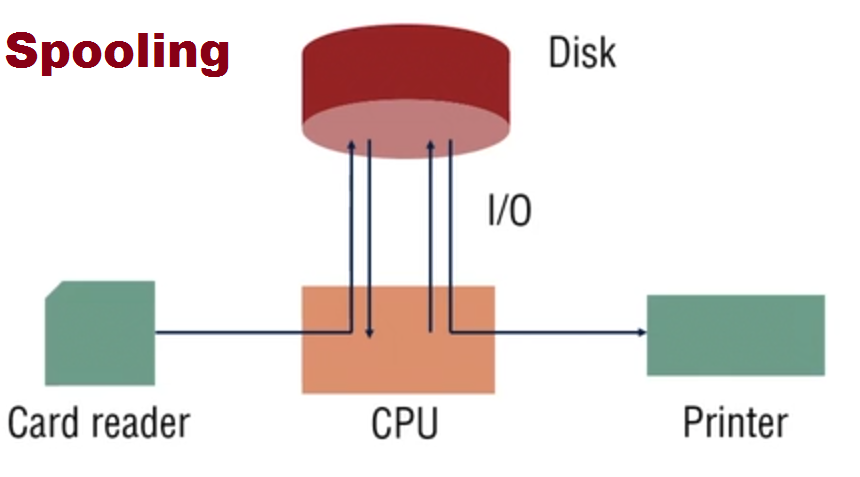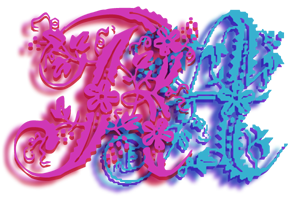Just like any other system, operating Systems also have evolved over a period of time, starting from the very primitive systems to the present-day complex and versatile OS(s).
1. Simple Batch Operating Systems (SB OS): The user collects the output from the operator, which also includes a memory dump. The OS is very simple, and its major task is to transfer control from one job to another.
The OS is resident in memory. The job is submitted to an operator who executes the job on the computer system. The output of that job appears after minutes, hours, or sometimes in days.
a. CPU is often idle.
b. CPU operates in the microsecond / nanosecond ranges.
c. I/O (input/output) devices work in the second / minute range.
2. Multi-programmed Batched Operating Systems (MPB OS):
ii) It increases the CPU utilisation.
iii) Job pool may be scheduled for execution in any order.
iv) Job scheduling brings in the ability of multi-programming.
v) It ensures a single user cannot keep both CPU and I/O (input/output) devices busy.
The OS picks and executes one of the jobs in memory.
The OS picks and executes one of the jobs in memory. When this job in execution, needs an I/O operation to complete, the CPU is idle.
Instead of waiting for the job to complete the I/O, the CPU switches to another job in memory.
When the previous job has completed the I/O, it joins the subset of jobs waiting for the CPU. As long as there are jobs in memory waiting for the CPU, the CPU is never idle.
OS_Unit 02: Transcript
We are going to discuss evolution of operating just like any other system, operating system. Also, I, I'm over involved over a period of time starting from the very I system to the presente complex and versatile work. Uh, at the end of topic, you will be able to describe simple batch and multi-program, batch operating system. Identify the role of, uh, both operating system, explain the work, uh, evolution of operating system. Let's discuss the simple batch and multi-program, batch operating system, simple batch operating system and multi-program batch. Uh, we are going to discuss the simple batch operating system. The user collect the output from the operator, which also include a maum. The operating system is very simple and its major task is to transfer control from one job to the another Job. operating system can handle multiple the operating system, which, uh, resident in a memory. when we are starting the system, that time going the booting process. And during the booting process, our operating system reside in a main memory from the second. The job is submitted to an another who execute the job on the computer system. Which job, uh, of, uh, going to execute. We are going to submit in a menu. The output appears after a minute, hours, sometimes a day. In a batch operating system, maybe the output, uh, appears in a minute, hours or sometimes day. It's depend on the, uh, may memory layout of the simple batch processing system. Here you can see the operating system and in a second part you are, you can see the user area in a batch processing operating system. Uh, there are several similar type of a batch of a process and one y one processor executing. And it's a non-pro. It means non primitive means the process cannot jump from one process to the another process we can. So they also say the process has a job so we can, uh, system cannot jump one job to the another job. And the second thing is, uh, when the process is going to taking the any input output, that time the CPU will be the idea. It means in a batch processing operating system, it's a time consuming. It's, uh, the batch operating system come on the 19th 16. And these are the simplest operating memory layout of a simple batch operating system. CP is often idle because if the process is going for the input output devices that time CPU will be the idle CPU operate in the microsecond or a nanosecond syringe. CPU uh, operate, uh, in a microsecond and nanosecond ranges. But the output maybe, uh, we will get the, uh, minutes or hour range to, uh, overcome this problem. The concept of is pooling hedge because in a batch processing operating system, only one process will run in a sink system. If the process is going further, input output that time CPU will be the idea. It means we are not using the uh, CPU, uh, so we are not getting, uh, much throughput. So overcome this problem. Uh, the concept of is pooling is, so let's discuss the pooling. How to overcome problem of the batch operating system is pooling. Increase the performance of the system is pooler may be reading the input of one job while printing the output of another and executing a hard job. I suppose that if the per CPU is uh, running for a process, if the execution or, uh, done third time the CPU go farther input output device, we can take an example. Suppose that one process one to a printer, third time it, uh, gives the printer. Printer means input out. Third time CPU go farther. Another process and the first process go farther printing. So it is, it can simultaneously work, so it's pooling. Make the faster rather. And here is a block diagram is pooling. Here you can see, uh, input and the output. Input is a card reader. And here output is a printer. Here you can see, uh, every input is going to the disc disk. May the secondary memory and uh, CPU take the inputs from the disc and take the al and take the output from the disc. And from the disc. Uh, go further why it's pulling, pulling, doing this manner. Why the input and, uh, are not directly connected to the CP. Because the post that if we are, uh, doing a typing that time we are typing A, B, C, D in a, uh, it is enough to typing and it is our speed to A, B, C, D. But the CP is a more faster to my speed. A, B, C. That time it'll go and save in a test and CPU U directly take this input from the disc and print in ice screen or aer uh, monitor. Uh, so in a monitor so we can say, yeah, is pooling is much faster rather than a batch processing. Operating pooling tends cementless work by managing the input and and operating system. Perform the following important functions, choose the job from the pool, a job that is executed. Next, increase the C utilization job pool may be scheduled for execution in any order. Job scheduling breaks the T alpha MultiPro. It means when, uh, we are making the job pools, there will be job pool in a ramp that time. CPU will be BG to a, uh, running a a multiple process that time there are lesser chances to CPU go item and it can execute in any order. It means it can take the first job, second job, third job, fourth job. There is a not necessity, but it is a non-print. When we are working in a multi programming environment, that time the situation non primitive means CPU is not jump from the one process to the another process. If the process is going for the input or output that time, it'll take the another process. Ensure the single user cannot keep both CPU and input devices vg. Here we can also ensure that CPU and input output, uh, one time cannot be V because CP working in a single process that time, uh, the process if go to the input output that time the CPU VG further another. So we are ensuring the CPU not VG for the input and also the pro uh, memory layout of the multi program system. Here we can say the operating system. They are a multiple jobs and these jobs come in a one by one in a non-pro, uh, non primitive manner means we can not escape from one job to the another job. But, but when one job is in a process and it is going for the input or output devices that time CPU can take the another job. This job may be the priority basis. Aura, C Fs, monitor, aura, s, gf man first come, first job and sort job first. These are the scheduling techniques we will discuss. Multi-program can be described the follow the operating system. Pick and execute one of the job in memory. When this job is executed, need an input output operation to complete the CPUs item. Instead, the waiting of job complete the input output. The CP switches to the another job memory. I already told you when a process going to the further input output. Yeah, waiting for the input output that time CPU switch further another job. So this is called the multi programming because if the process going for the input output or a waiting that time, it can choose the, when the previous job has completed the input output, the join the sub set of job waiting. The CPU as long as there is a job in memory waiting for the CPU. The CPU is never either because CPU currently running, if the job is going for a if, uh, waiting for the input output that time CPU can take the another job. That's one when the second job going for the input output waiting instead that time it can take the, uh, third job. So CPU that there is a less chances of the CPU either, but it always work on and on. In this topic, you learn that a simple batch operating system job is submitted to an operator who execute the job on the computer system. Here is a similar type of a batches which execute one y one if the process going for the input output, that times you will be the ILE in a simple batch operating system. In a multi-program based operating system, execute of the jobs in memory here will be the secondary memory where the multiple reside, the multiple jobs and one, uh, if the job is going for the input output and waiting for the input output, that time CPU can take the, uh, another job further execution. So there is a less chance of the CPUs. Multi programming operating system is faster rather than the batch operating system because it can come from one job to the another job if the job is waiting for input time. This, uh, brings us to end up this topic for, uh, more information.





